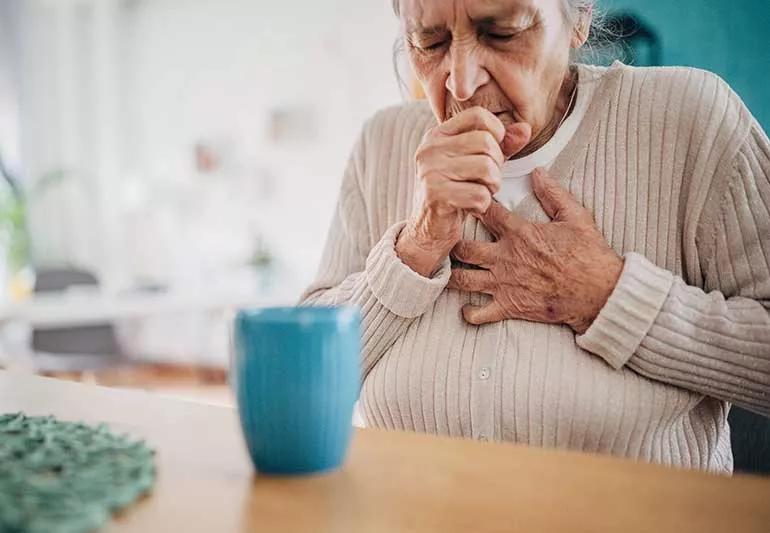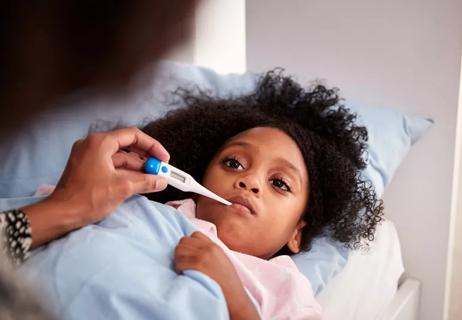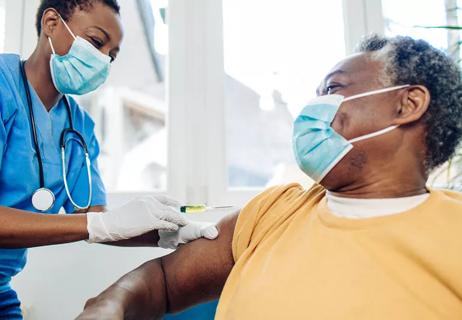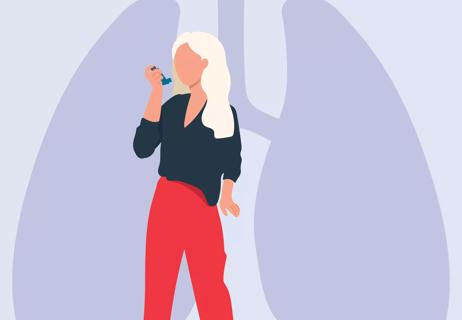Our most at-risk populations are still highly affected by RSV

Infectious diseases have been top of mind over the last several years thanks to the COVID-19 pandemic. But the respiratory syncytial virus (RSV) has been particularly problematic for decades.
Advertisement
Cleveland Clinic is a non-profit academic medical center. Advertising on our site helps support our mission. We do not endorse non-Cleveland Clinic products or services. Policy
Historically, it was normal to see thousands of pediatric patients a year who were infected with RSV, particularly younger kids under the age of 5. But now, with late summer surges of RSV affecting a wider range of people, the respiratory virus has become increasingly dangerous for people who are immunocompromised and/or over the age of 60.
So, what’s changed? And why are we experiencing RSV surges now, even in older adults?
Pulmonary medicine specialist Donald DeCoy, MD, explains what’s fueling the RSV upswing, along with what we can expect for future RSV seasons.
RSV has surged in nearly all populations. According to the U.S. Centers for Disease Control and Prevention (CDC), an estimated 58,000–80,000 children younger than 5 and an estimated 177,000 adults over the age of 60 are hospitalized each year after getting infected with RSV. Of those older adults, as many as up to 14,000 of them die from their RSV infection each year.
Recent RSV seasons have caused those numbers in older populations to increase nearly 10-fold, with about 15 out of every 10,000 people older than 50 being hospitalized for their RSV infection.
“RSV kind of took a backseat over the last two to three years during the pandemic and we didn’t see as much of it as we did before, but now, it seems to be coming back again, partially because of the decrease in COVID-19 precautions,” says Dr. DeCoy.
Advertisement
“RSV is more apparent now in the younger and older populations,” he continues.
More specifically, people who are at high risk for RSV include:
“RSV has been an increasing pathogen we’ve noticed in these populations and in hospitalized patients over the last 10 to 20 years,” notes Dr. DeCoy. “Because of the communal experience of living in close proximity to multiple different people who may be carriers of RSV or have been exposed to RSV, people who live in extended care facilities, nursing homes, assisted living communities or hospitalized patients are also at a 30% higher risk of RSV.”
And these populations specifically are at higher risk for developing long-term complications and other conditions like pneumonia, asthma and chronic obstructive pulmonary disease (COPD).
For starters, the U.S. population of people older than 60 is larger now than it’s ever been before, and we’ve more people who are immunocompromised than before COVID-19 came about.
“These at-risk populations are still present, and we’re no longer as strict with the COVID-19 precautions that were being taken with masking, handwashing and shielding your face and eyes,” says Dr. DeCoy.
And just like kids who’ve become more vulnerable to RSV, adults who’ve remained cautious during the pandemic have increased vulnerability against current strains of the flu and RSV.
“Life is coming back to what we would consider to be normal pre-pandemic, and exposure of these populations is becoming more apparent,” he adds. “We’ve seen more RSV in older adults this past winter than we’ve seen the previous seven years.”
One study suggests recent surges of RSV have been driven by multiple lineages of the virus — much like COVID-19 and its many variants and the strains of influenza (the flu), which continues to evolve every year. But RSV doesn’t mutate as often as these other viruses. Its design was already particularly tricky enough to evade effective vaccination — until the U.S. Food and Drug Administration (FDA) approved the first RSV vaccine for adults 60 and older in May 2023.
“What makes the RSV virus problematic is the way it gets into cells with the help of prefusion and postfusion proteins,” explains Dr. DeCoy. “The prefusion protein attaches to the host’s cell membrane and then the postfusion protein acts like a harpoon that injects into the cell. So, the virus sort of grabs respiratory cells with one hand, so to speak, and uses the other hand to pull itself in.”
Advertisement
Doctors have referred to the overlap of seasonal surges in RSV, COVID-19 and influenza as a tripledemic. While they present with similar symptoms, all three viruses are very different from one another and all three are circulating in high quantities roughly at the same time.
That means, from late summer through early winter, it’s a good idea to take precautions to reduce the likelihood of infection from any of these viruses. That’s especially true for people who are immunocompromised and people 60 and older. Anyone concerned about infection should get vaccinated as soon as they’re able now that it’s approved by the FDA.
“We’ve historically seen RSV occur in at-risk populations beginning late summer, in the early fall and into winter, and we’re going to continue to see that,” states Dr. DeCoy. “As we approach those times of the year, if you’re going to be around large groups of people, people who have an active respiratory infection, or people who’ve been exposed to RSV or influenza, I think masking up and taking the appropriate precautions is not a bad idea. The culture is probably going to continue to trend that way.”
Advertisement
Learn more about our editorial process.
Advertisement

RSV can lead your child to develop pneumonia and have trouble breathing

Getting extra rest, drinking fluids and taking over-the-counter medications can help your little one bounce back

The first year of the RSV immunization program brought promising results

Respiratory syncytial virus spreads easily through respiratory droplets spewed out by those who are infected

It comes down to a wheeze, a fever and long-term effects

Adults 60 or older, pregnant women and babies may be eligible for protection against RSV

Taking extra precaution during RSV season can be lifesaving

People with certain pre-existing medical conditions have increased risk factors

Start having sex about 72 hours before ovulation, then at least every other day during your fertile window

Attachment theory suggests that your earliest relationships shape connections throughout your life

It isn’t a recognized mental health disorder, but research shows that problematic social media use can negatively affect your mental health, self-esteem and sleep